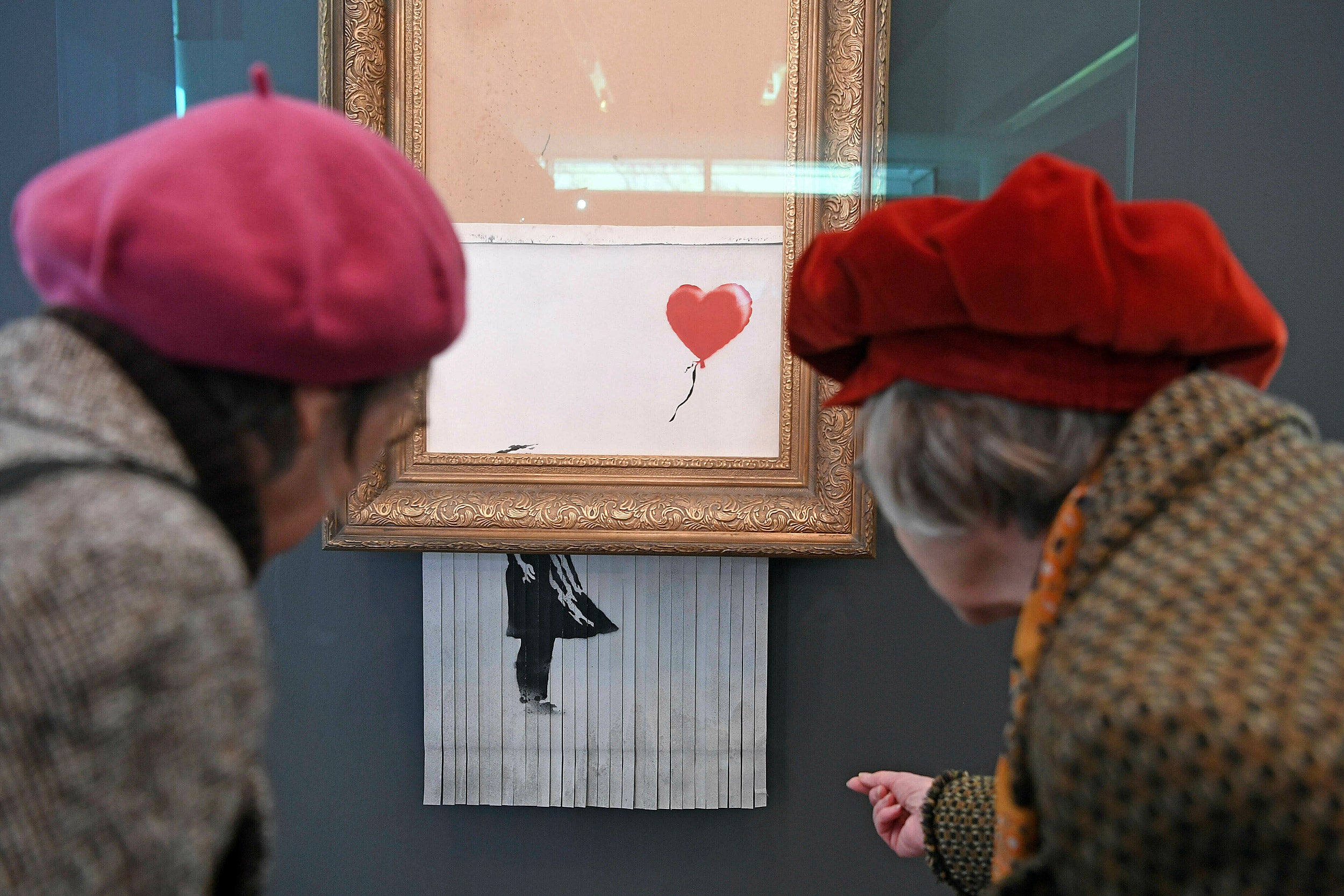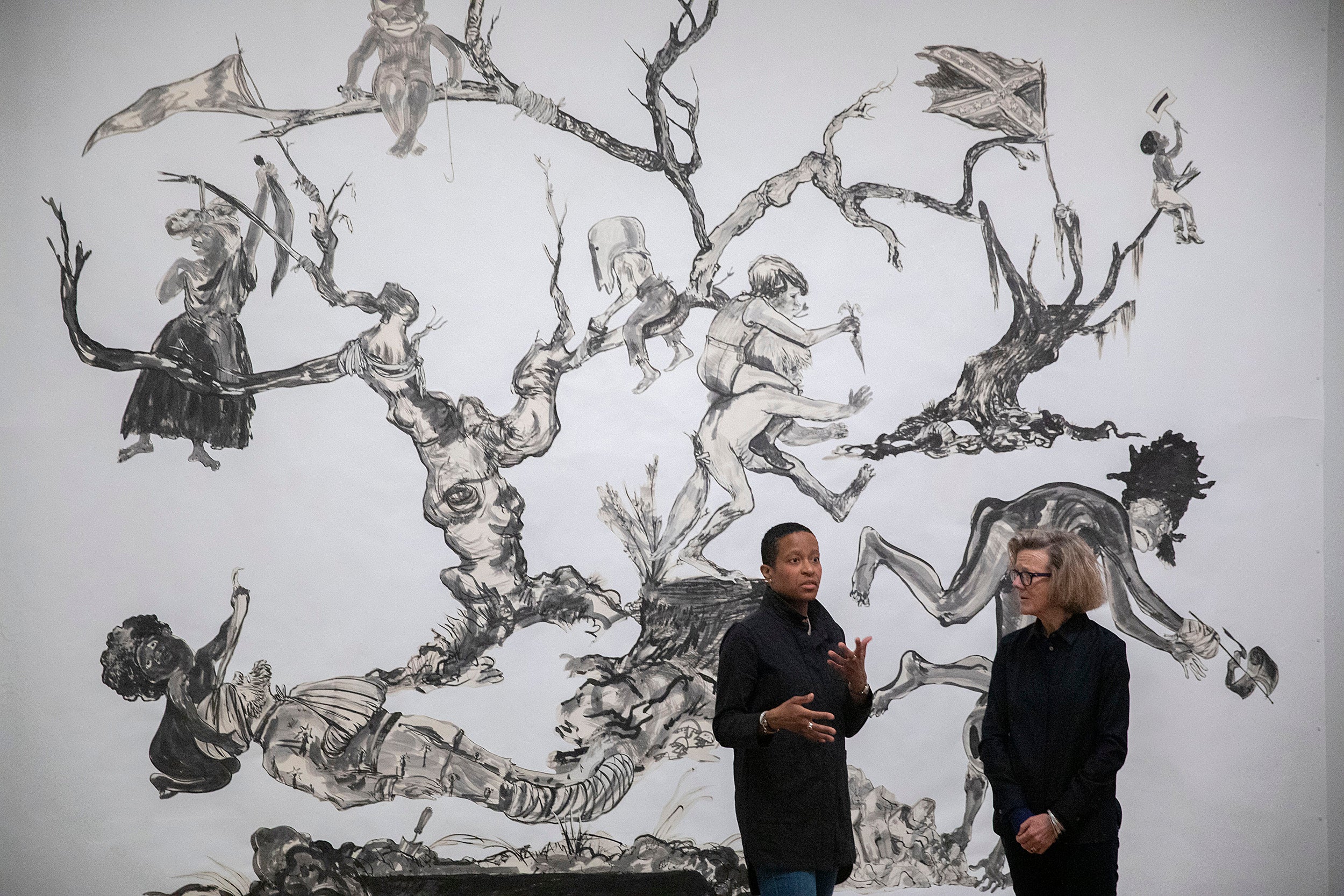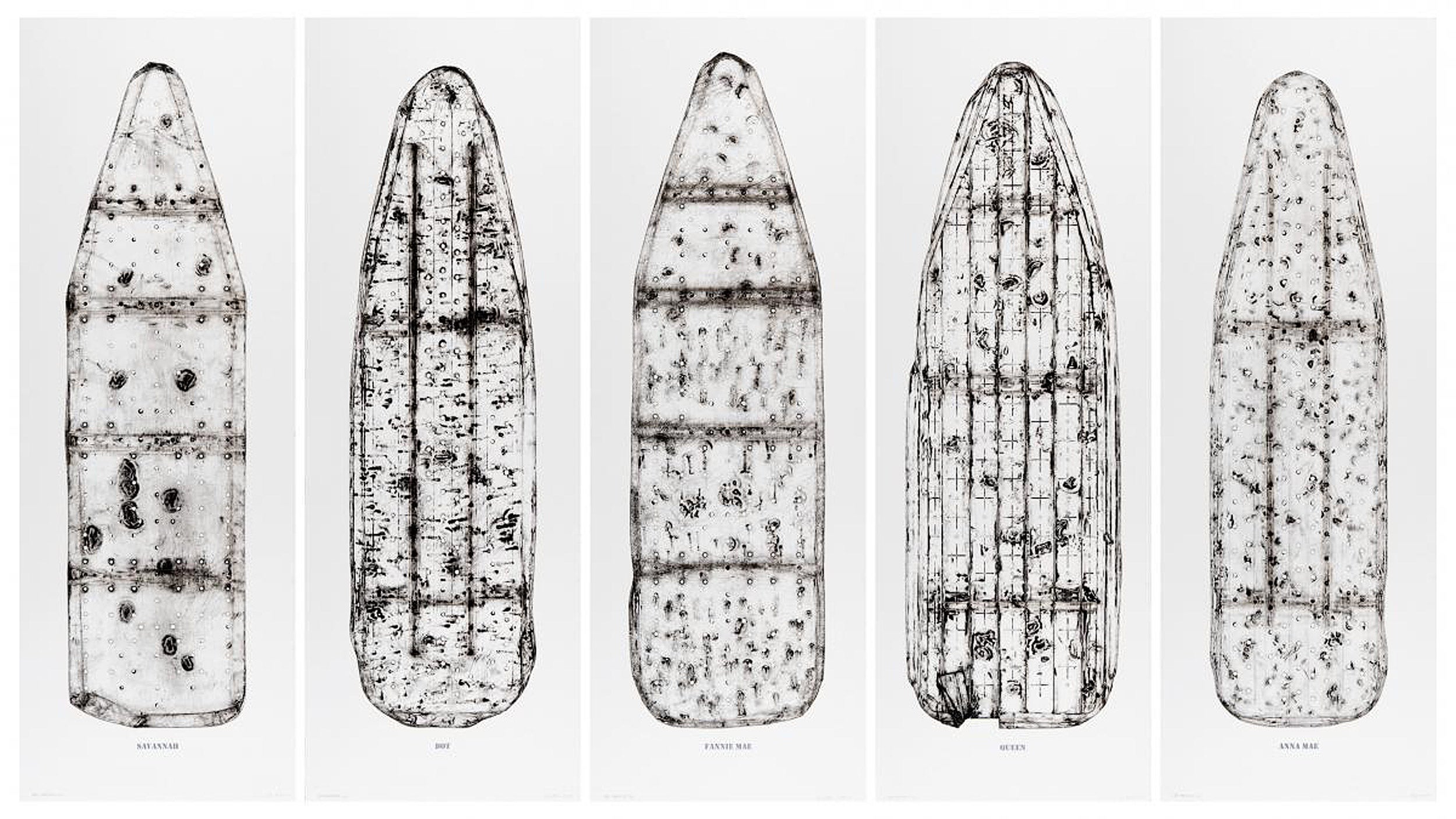
“Five Beauties Rising” is part of Willie Cole’s Radcliffe exhibit of prints made from ironing boards that have been flattened, covered with ink, and used as plates on a press. Inspired by the women from the eras of Cole’s grandmother and great-grandmother, the works include names.
Courtesy of Willie Cole
Seeing beauty in the mundane
Artist Willie Cole uses everyday objects like ironing boards to ‘reveal the spirit’ within
Contemporary sculptor, printer, and visual artist Willie Cole’s haunting works blend the familiar with the unexpected. Now that striking creative tension is on view at the Radcliffe Institute for Advanced Study in “Willie Cole: Beauties.”
The exhibit, on display in Byerly Hall’s Johnson-Kulukundis Family Gallery, features a series of prints made from ironing boards that have been crushed, hammered, flattened until they’re a few millimeters thick, covered with ink, and used as plates on a printing press. The ghostly silhouettes shift perceptions and challenge assumptions with their suggestion of the ethereal and the everyday.
“My interest or my habit is to work with objects that have had intimate contact with human beings,” Cole said during a talk prior to the show’s official opening this week. “The things you touch hold onto a part of you. My interest then is to extract and reveal the spirit in any object I use.”
Like so much of Cole’s output, the 24 prints on display resist simple interpretation. Inspired by the women from the eras of Cole’s grandmother and great-grandmother, the works include names such as Anna Mae, Bessie, Calpurnia, Pearl, Queen, and Rose inked in capital letters at the bottom of each piece. The images suggest the artist’s kin — both housekeepers — as well as the generations of African-American women who toiled in domestic work.
But Jennifer Roberts, Radcliffe’s Johnson-Kulukundis Family Faculty Director of the Arts, who was instrumental in bringing Cole’s collection of “Beauties” prints to campus, said they are filled with “contradictory associations.” The prints, she said, call to mind “the sufferance of these women, but also their knowledge and their creativity and their power.”
For Roberts, who is also Harvard’s Elizabeth Cary Agassiz Professor of the Humanities, reminders of violence, trauma, and even death are clear in Cole’s works. The images conjure slave ships, tombstones, shrouds, and mummies, she said, “but other associations also shoulder their way into this scene. They also look like stained-glass windows, shields, veils, bolts of patterned fabric, sentinels, guardians, saints, even surfboards.”
The prints call to mind “the sufferance of these women, but also their knowledge and their creativity and their power.”
Jennifer Roberts, Radcliffe’s Johnson-Kulukundis Family Faculty Director of the Arts
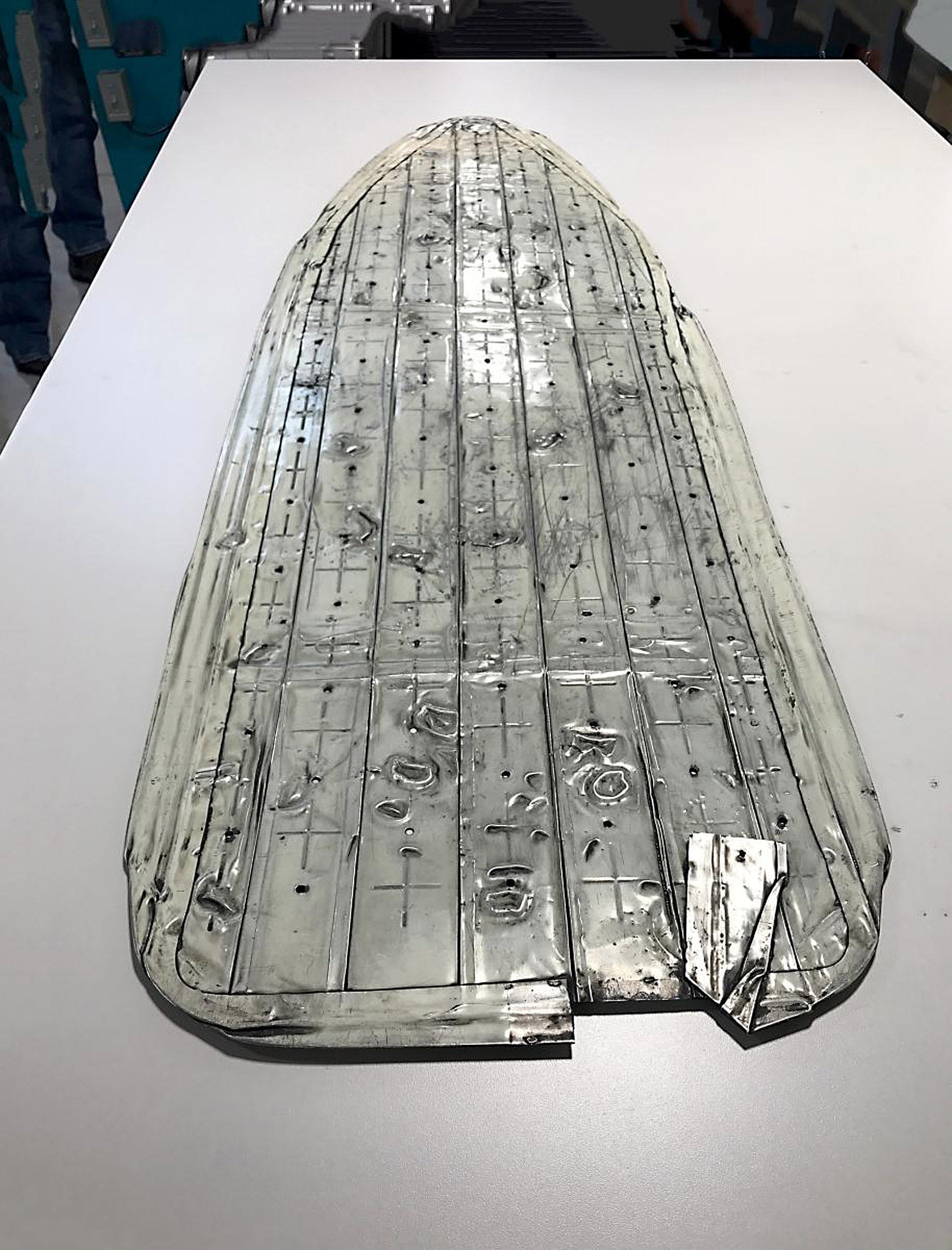
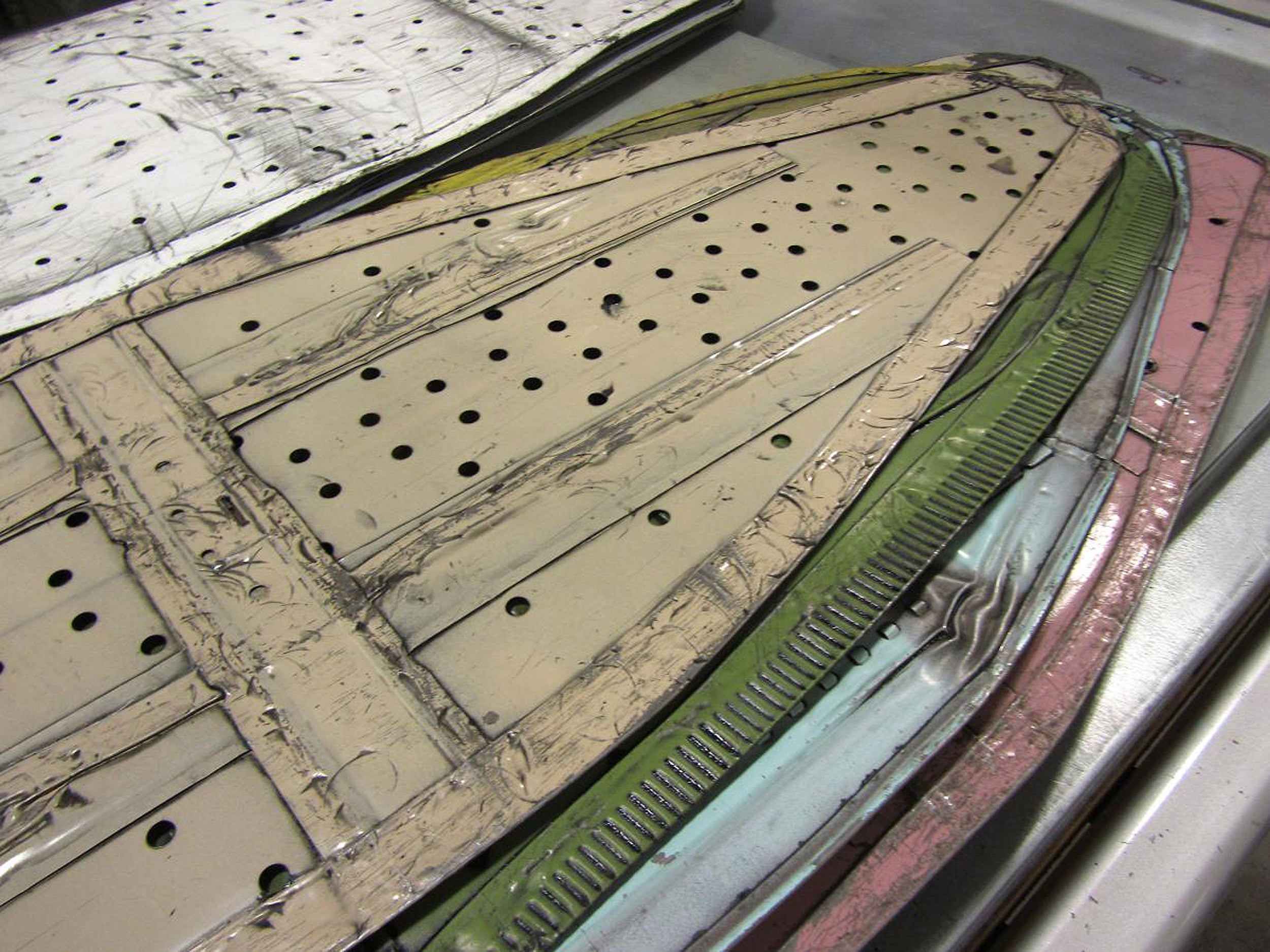
The flattened ironing boards from which the prints were made.
Photos by Jennifer L. Roberts
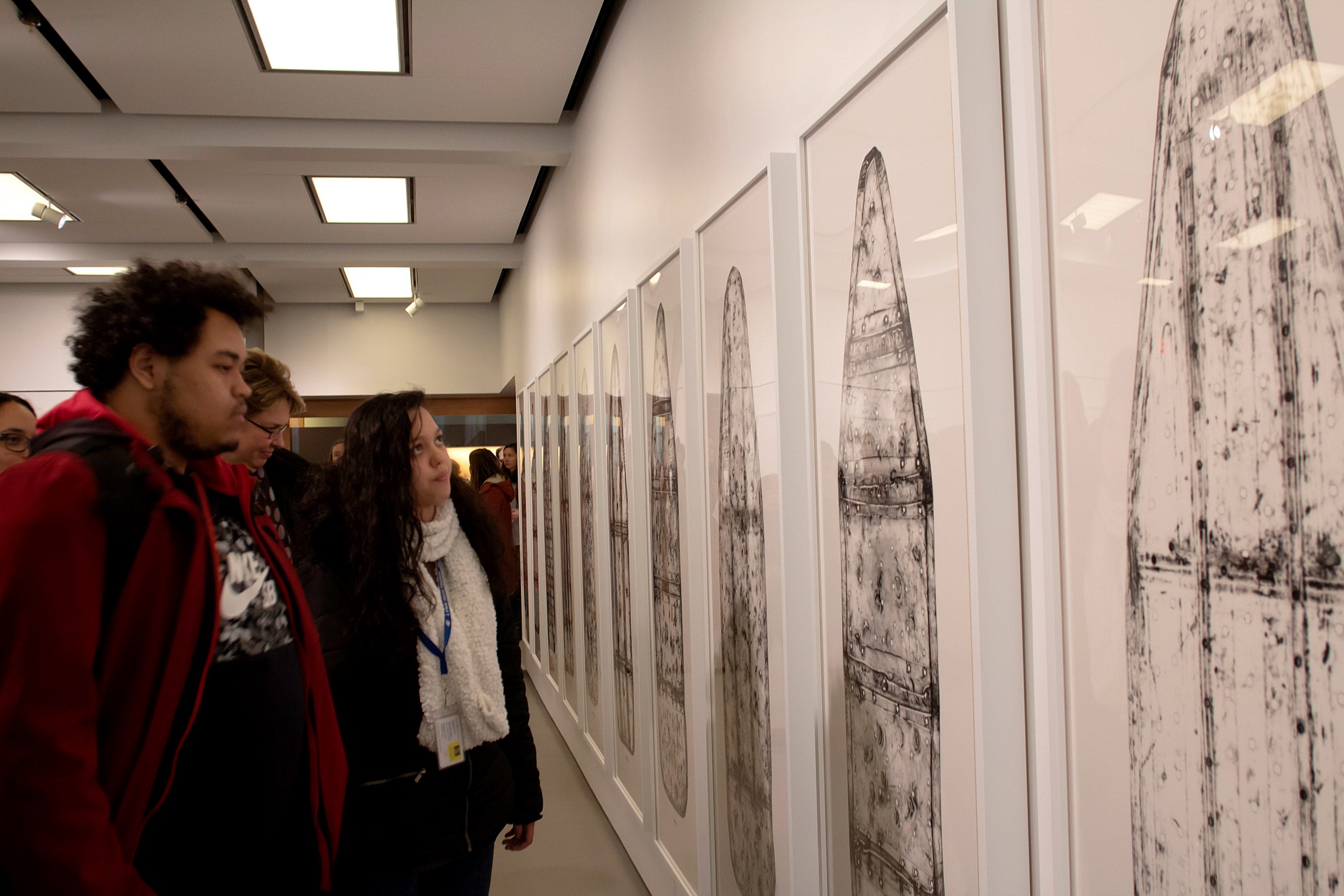
Noel Pichardo and Jasmin De La Cruz, student artists from RAW Art Works in Lynn, view the gallery.
Photo by María F. Sánchez
Cole has long used familiar items to create art that transforms both the object and the viewer’s gaze. In his hand, piles of discarded high-heeled shoes become a face, a flower, or a chair; recycled plastic water bottles take the shape of a chandelier or a 1959 Eldorado — a wink to the consumer culture that drives the oil industry that in turn fuels plastics and gas-guzzling cars.
The artist first turned to the iron as motif in the 1980s when he found one lying in the street that had been crushed by a passing car. “The magic occurred the moment I looked at it and noticed that it was looking at me too,” Cole told an interviewer in 1996. “I picked it up. It was no longer an iron but an African mask.” He has fashioned sculptures from steam irons and scorched the surface of canvas and wood with their heated mist to create works that recall masks, tribal markings, and shields. In 1997 he used the silhouette of an ironing board to evoke the outline of a slave ship in his poignant woodcut “Stowage.” Cole’s initial impulse for “Beauties” was to create work that resembled the port where slave ships docked. But when the New Jersey–born artist saw the first print in the series, created in collaboration with Cole Rogers, master printer at the Highpoint Center for Printmaking in Minneapolis where the works were made, lightning struck.
“Seeing a single image by itself was enough,” said Cole, who went on to produce “Beauties.”
In discussing their printing process, Rogers said the pair tried a variety of techniques, including etching, lithography, woodcut, and screen printing before landing on their final method of printing from the ink-covered ironing boards directly onto paper. “You really kind of need to let things blow up at first,” said Rogers. “If everything that you try is a success, you are not trying hard enough, the research is really not pushing the envelope.”
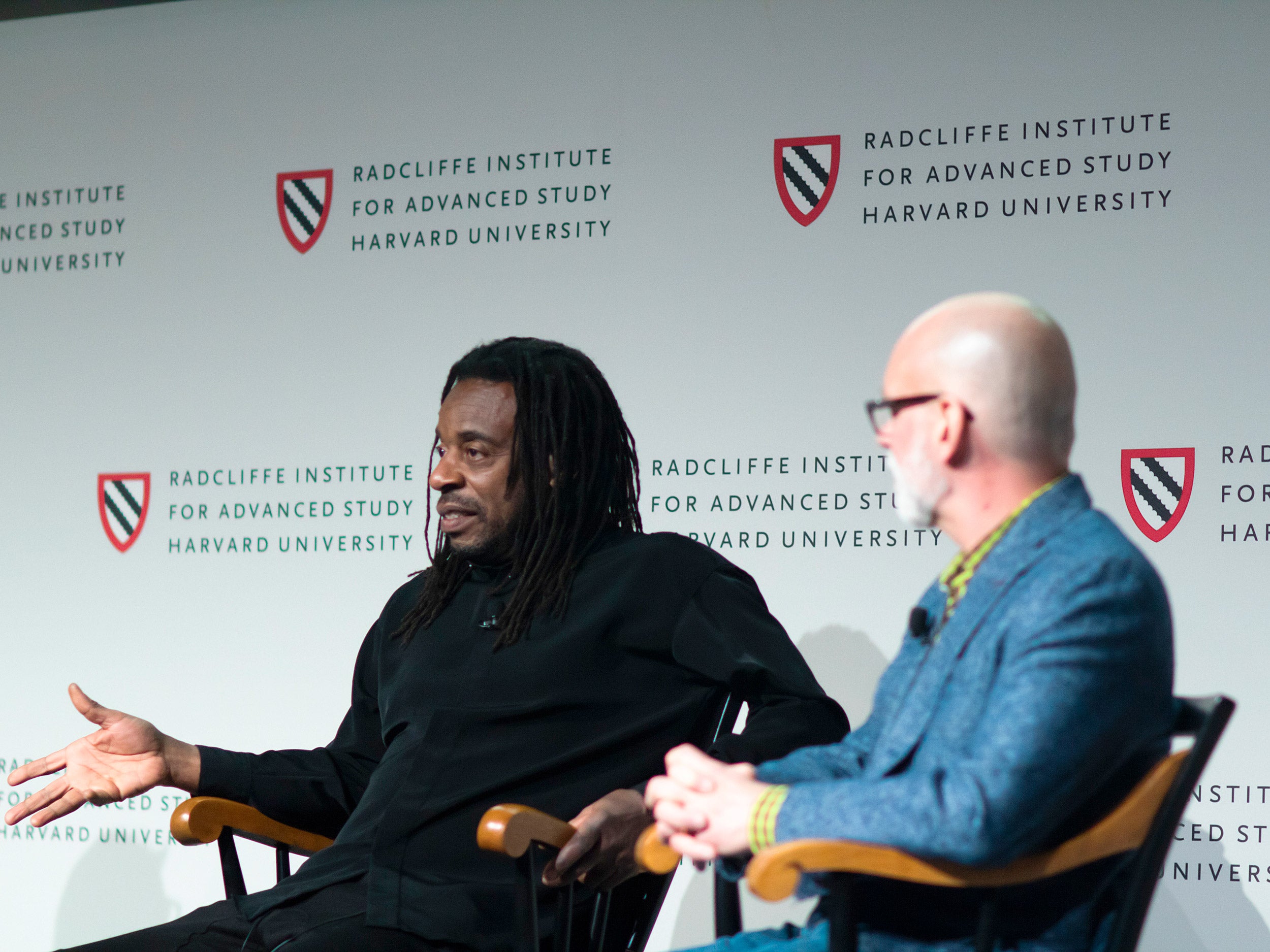
Artist Willie Cole and master printer Cole Rogers discuss their process.
Photo by María F. Sánchez
The result of that trial and error is an emotional tour de force.
For Cole the works have always inspired strong feelings, but as the years have passed, he told the Radcliffe crowd, he has allowed himself to be more open to his “own filters,” which let him see the prints in a “much more visceral, emotional way.”
“They hit me hard when I first created them,” said Cole. “But today you are lucky I am not sitting here crying.”
The opportunity to engage with a selection of Cole’s prints will remain an option after the show closes on June 29. The Harvard Art Museums owns five of the works now up at Radcliffe, and visitors can request to view prints of their choosing in the museums’ art study center.
For a list of events taking place in the gallery in conjunction with the show click here.



